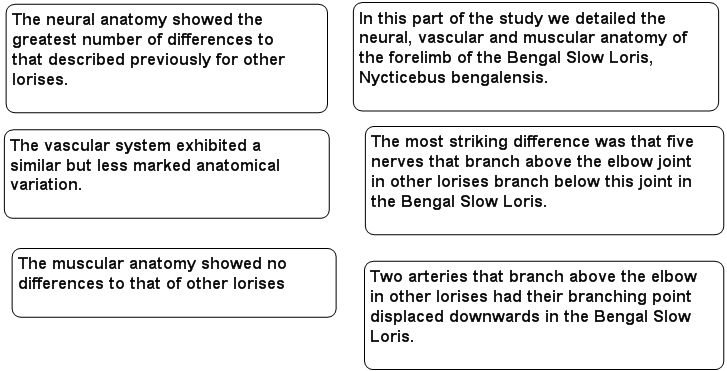The Science Of Scientific Writing Set A Intro to Paragraphs Features of Maps Examples of Maps Exercise 1 Quiz Diverse Organising Principles Example Exercise for Exercises 2-4 Exercise 2 Exercise 3 Exercise 4 Adding Non-core Content *Exercise 5* Final Page.
OVERVIEW: The way to well-written science
PART I: Paragraphs and Sentences
SET A: Paragraphs: The Maps Behind Them
SET B: Paragraphs: Using Maps to Meet Readers' Expectations
SET C: Paragraphs with Something Extra: Points and Tails
SET D: The Generic Section: Expectations and Maps as Blueprints
SET E: Scientific Sections: The Methods and Results
SET F: Scientific Sections: The Discussion
SET G : Scientific Sections: The Introduction
SET H : Sentences
SET I : The Paper as a Whole
PART II: The Paper and its Sections
SET 1: Argument Parts
SET 2: Indicator Words
SET 4: Locating Arguments in Prose
SET 5: Rationale's Essay Planner
SET 6: Evidence in Arguments: Basis Boxes
Synthesis 1: Position-Early Paragraphs
Synthesis 2: Position-Final Paragraphs
Synthesis 3: Writing a Discussion I
Synthesis 4: Writing a Discussion II
Exercise 3
IF YOU ARE DOING THESE EXERCISES IN A CLASS, SAVE YOUR RATIONALE FILE NOW!
1. Drag the image of the sentences below onto the Rationale Workspace, and then rearrange the individual sentences into a nested diagram.
2. Then add one box to the Workspace (e.g. a white "Grouping" Box from the Building Panel), and add in all the sentences in order by copying and pasting from the boxes in the diagram. You can resize the box by pulling on its bottom and right-hand edges with the cursor.
Hints
In making decisions as to which is the sentence appropriate for the top box of the map, and what is the "correct" sequence for the rest of the sentences, keep these ideas in mind:
- Look for ways to apply one or more of the primary and secondary Organising Principles
- Look for words or phrases that act as explicit guides to the sequence of (at least some of) the sentences, for example: First, secondly, in conclusion.
- Look closely at the beginning of sentences because that is a place where writers often repeat words that are taken from the previous sentence.
3. Check your work against the model. If your diagram differs from the model, try to understand why, and if you can't ask for assistance (if available). If you are submitting your work for feedback by a teacher, don't change your answer to fit the model. Your initial attempt at the exercise is more informative and will help the teacher to guide you.
NB: The model answer will open in a new window. Close the window when you're finished.
......
